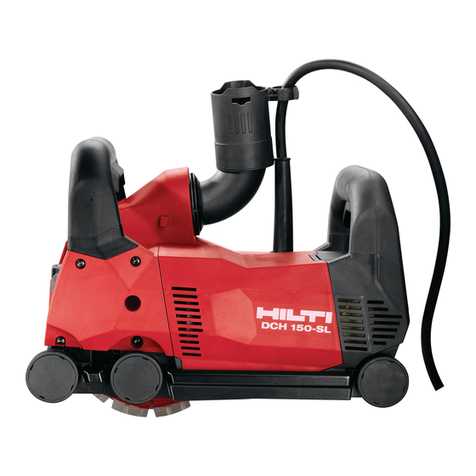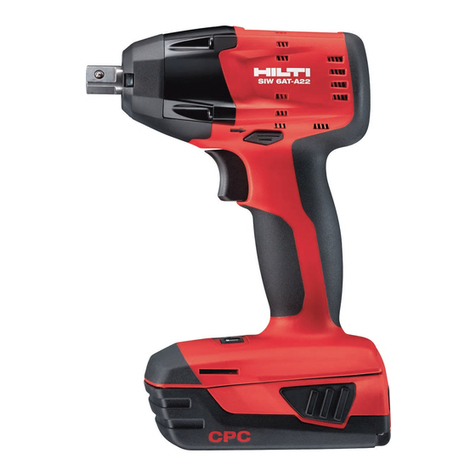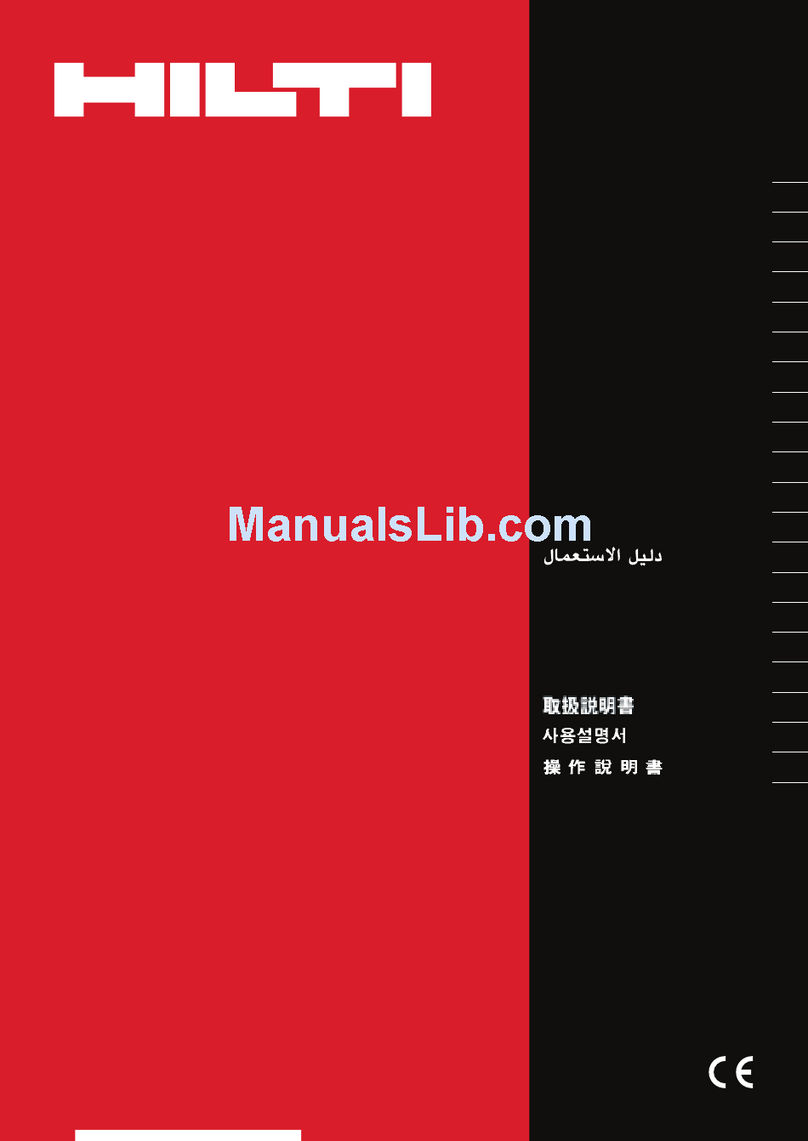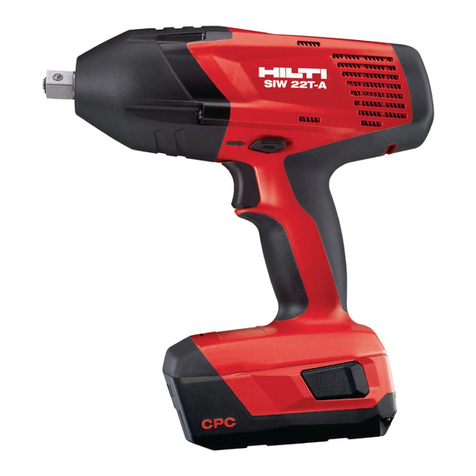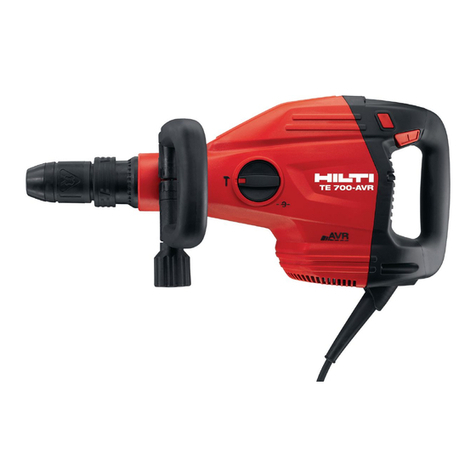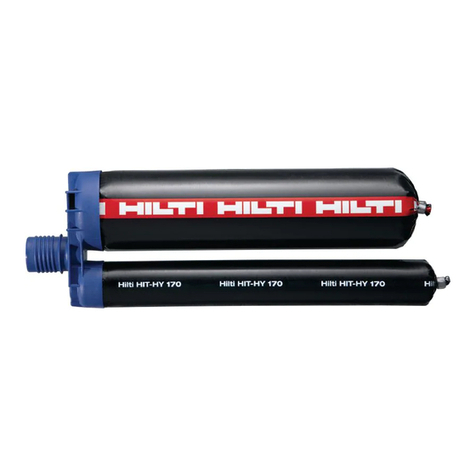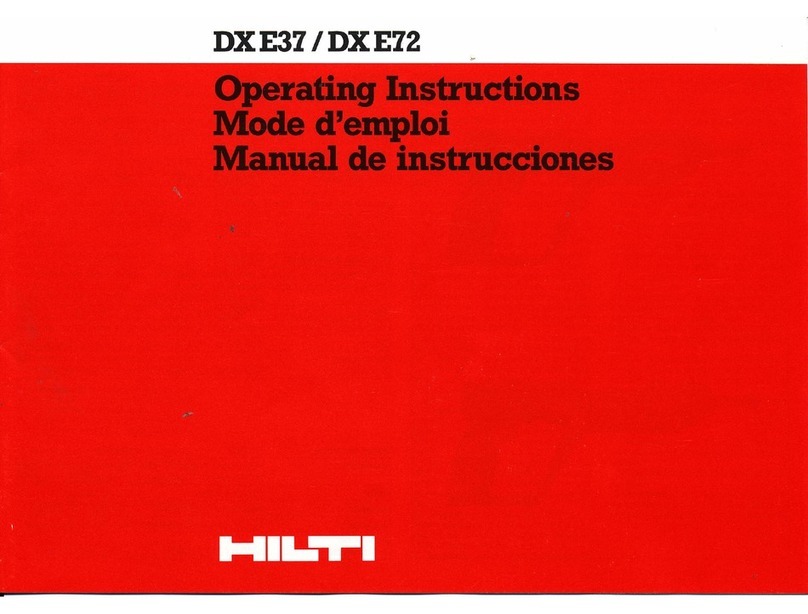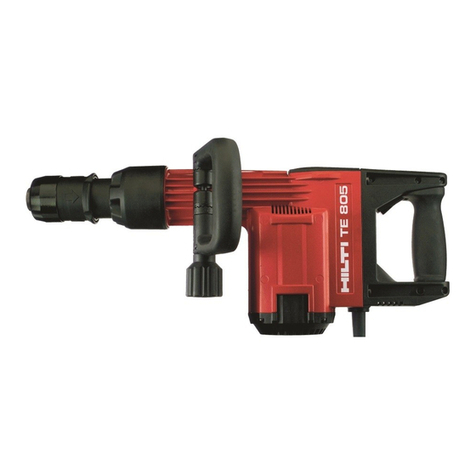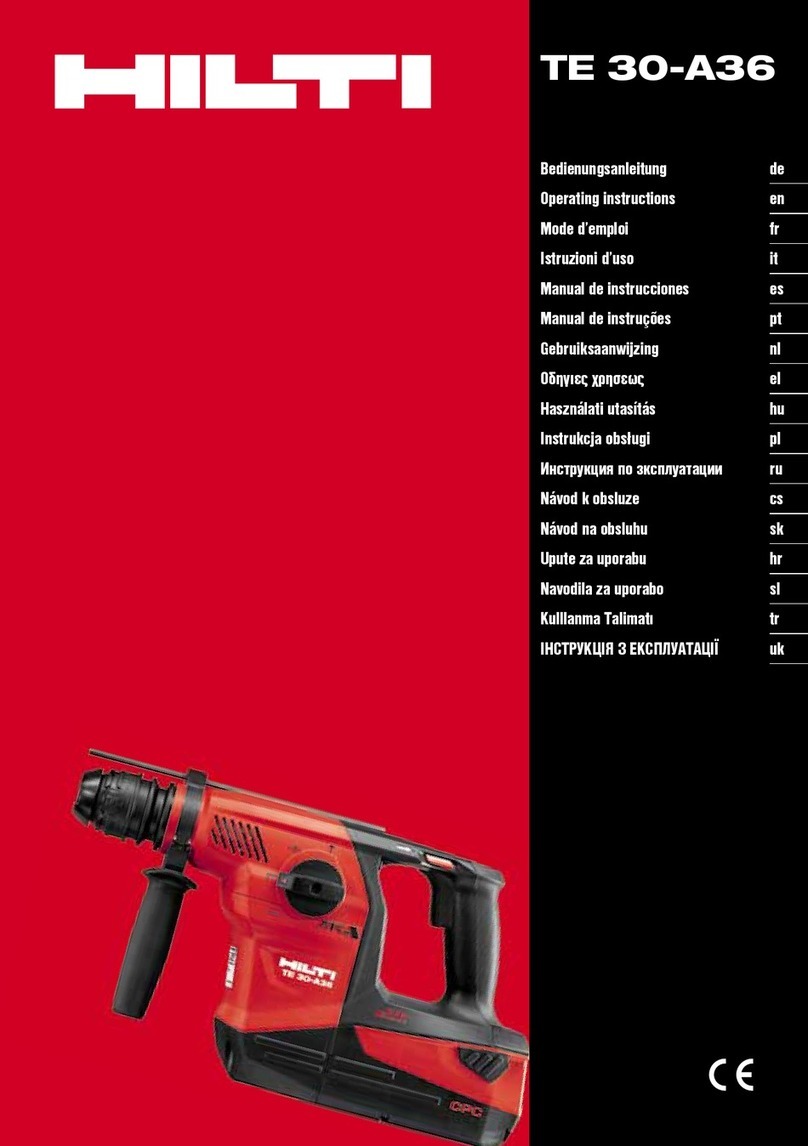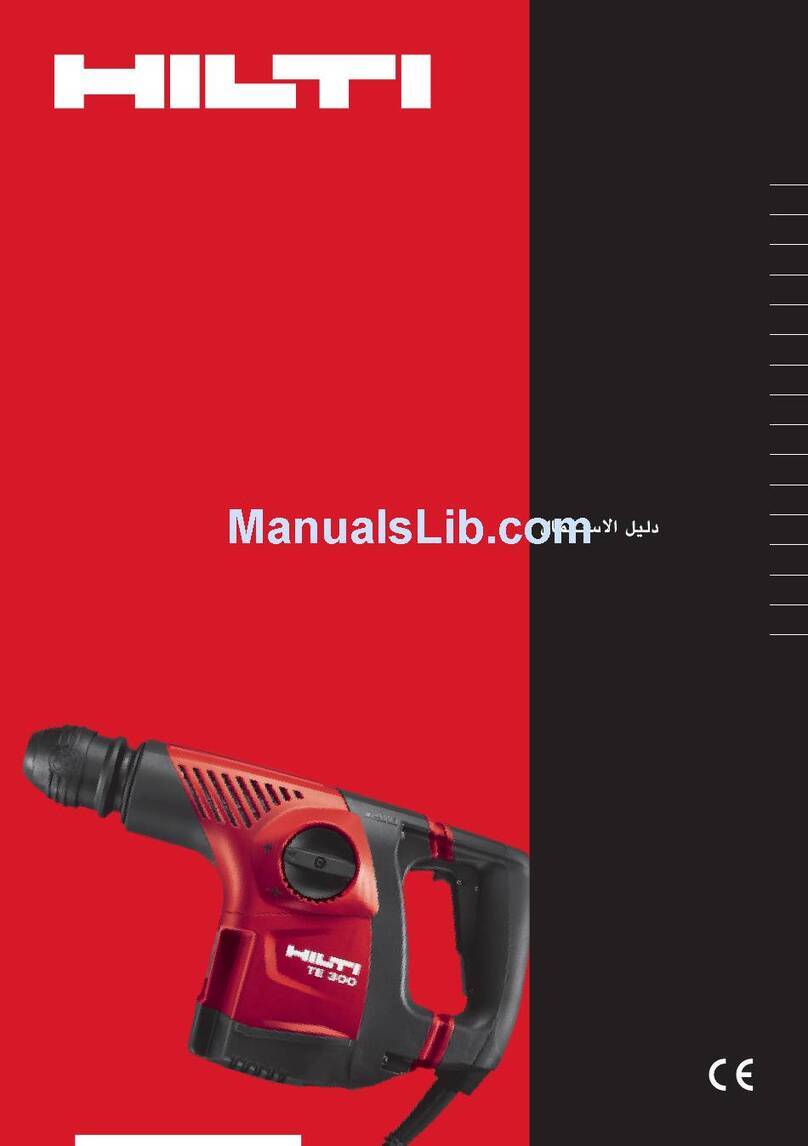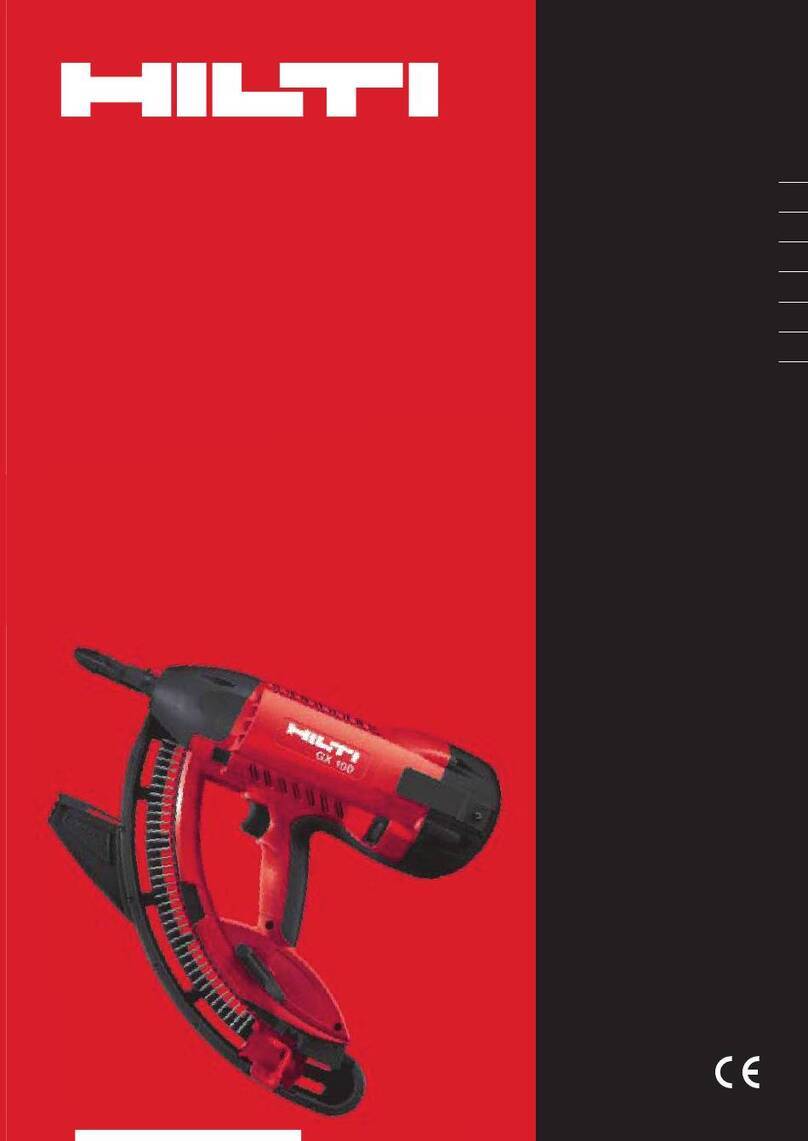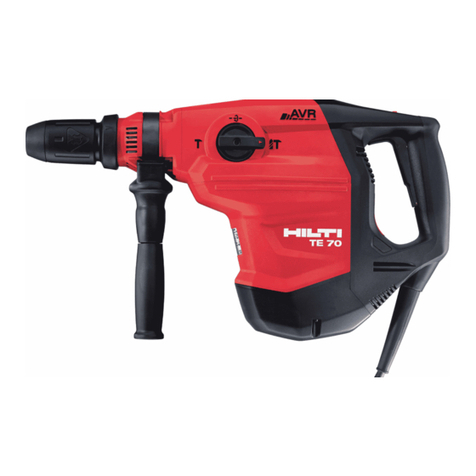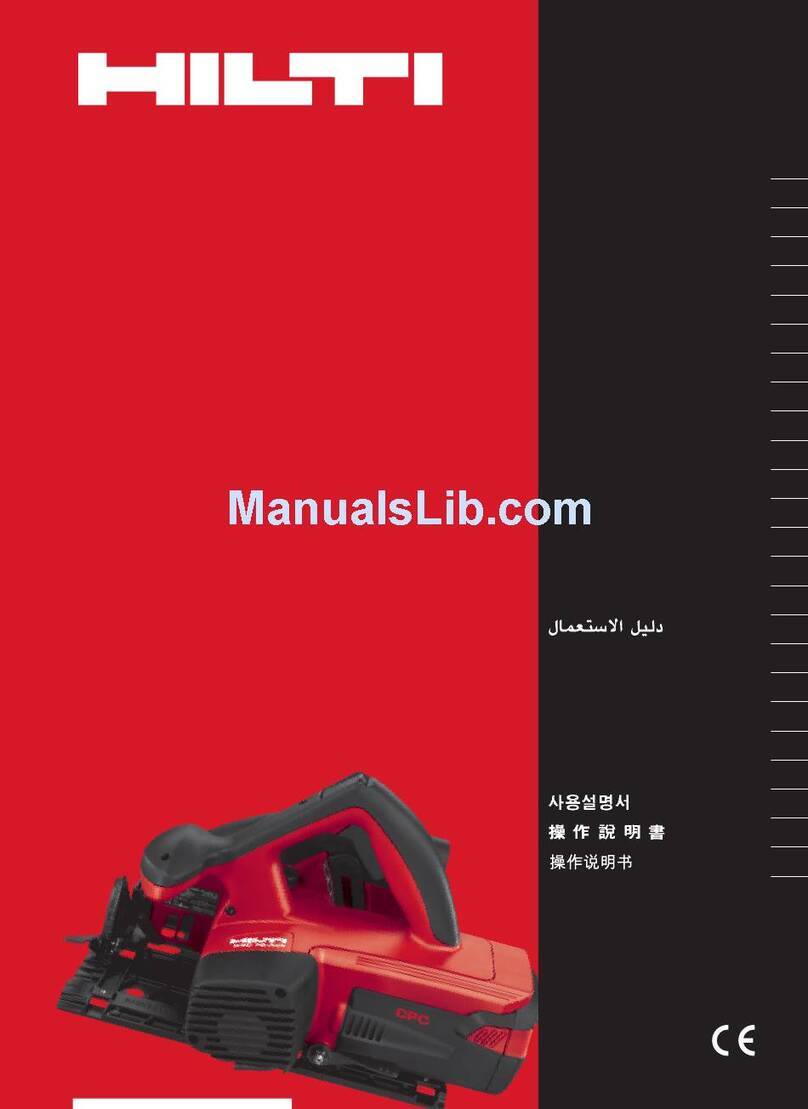
5 Safety instructions
5.1 Basic information concerning safety
In addition to the information relevant to safety given
in each of the sections of these operating instructions,
the following points must be strictly observed at all
times.
5.1.1 Requirements to be met by users
a) The tool is intended for professional use.
b) The tool may be operated, serviced and repaired
only by authorized, trained personnel. This per-
sonnel must be informed of any special hazards
that may be encountered.
5.1.2 Personal safety
a) Stay alert, watch what you are doing and use
common sense when operating a direct fastening
tool. Don’t use the tool when you are tired or under
the influence of drugs, alcohol or medication. Stop
using the tool if you experience pain or do not feel
well. A moment of inattention while operating the
tool may result in serious personal injury.
b) Avoid unfavorable body positions. Make sure you
work from a safe stance and stay in balance at all
times.
c) Wear non-skid shoes.
d) Never point the tool toward yourself or other per-
sons.
e) Never press the nosepiece of the tool against your
hand or against any other part of your body (or
other person’s hand or part of their body).
f) Keep other persons, especially children, away
from the area in which the work is being carried
out.
g) Keep the arms slightly bent while operating the
tool (do not straighten the arms).
h) Observe the information printed in the operating in-
structions concerning operation, care and mainten-
ance.
5.1.3 Use and care of powder-actuated fastening
tools
a) Use the right tool for the job. Do not use the tool
for purposes for which it was not intended. Use it
only as directed and when in faultless condition.
b) Never leave a loaded tool unattended.
c) Store unused cartridges and tools currently not in
use in a dry place where they are not exposed to
high temperatures.
d) Transport and store the tool in a toolbox that can be
secured to prevent unauthorized use.
e) Always unload the tool (remove cartridges and
fasteners) before cleaning, before maintenance,
before work breaks and before storing the tool.
f) When not in use, tools must be unloaded and
stored in a dry place, locked up or out of reach of
children.
g) Check the tool and its accessories for any dam-
age. Guards, safety devices and any slightly worn
parts must be checked carefully to ensure that
they function faultlessly and as intended. Check
that moving partsfunction correctly without stick-
ing and that no parts are damaged. All parts must
be fitted correctly and fulfill all conditions neces-
sary for correct operation of the tool. Damaged
guards, safety devices and other parts must be
repaired or replaced properly at a Hilti service
center unless otherwise indicated in the operat-
ing instructions.
h) Pull the trigger only when the tool is fully pressed
against the working surface at right angles.
i) Always hold the tool securely and at right angles
to the working surface when driving in fasteners.
This will help to prevent fasteners being deflected
by the working surface.
j) Never redrive a fastener. This may cause the
fastener to break and the tool may jam.
k) Never drive fasteners into existing holes unless
this is recommended by Hilti.
l) Always observe the application guidelines.
m) Use the fragmentation guard (stabilizer) whenever
allowed by the application.
n) Never pull the fastener guide back by hand as
this could make the tool ready to fire. This could
cause a fastener or the piston to be driven into a
part of the body.
5.1.4 Work area safety
a) Ensure that the workplace is well lit.
b) Operate the tool only in well-ventilated working
areas.
c) Do not attempt to drive fasteners into unsuitable
materials: Materials that are too hard, e.g. welded
steel and cast iron. Materials that are too soft, e.g.
wood and drywall panel (gypsum board). Materials
that are too brittle, e.g. glass and ceramic tiles.
Driving a fastener into these materials may cause
the fastener to break, shatter or to be driven right
through.
d) Never attempt to drive fasteners into materials
such as glass, marble, plastic, bronze, brass,
copper, rock, insulation material, hollow brick,
ceramic brick, thin sheet metal (< 4 mm), cast
iron or cellular concrete.
e) Before driving fasteners, check that no one is
present immediately behind or below the working
surface.
f) Keep the workplace tidy. Objects which could
cause injury should be removed from the work-
ing area. Untidiness at the workplace can lead to
accidents.
g) Keep the grips dry, clean and free from oil and
grease.
en
21
Printed: 07.07.2013 | Doc-Nr: PUB / 5125956 / 000 / 00


